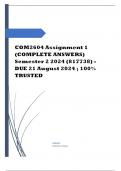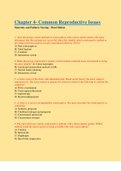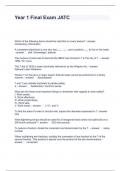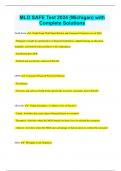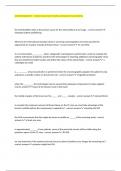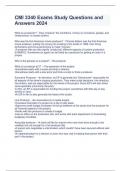Exam (elaborations)
COM2604 Assignment 1 (COMPLETE ANSWERS) Semester 2 2024 (817738) - DUE 21 August 2024 Course Media Studies: Mass Communication and Media Theory (COM2604) Institution University Of South Africa (Unisa) Book Media Studies: Media history, media and society
- Course
- Institution
- Book
COM2604 Assignment 1 (COMPLETE ANSWERS) Semester 2 2024 (817738) - DUE 21 August 2024 Course Media Studies: Mass Communication and Media Theory (COM2604) Institution University Of South Africa (Unisa) Book Media Studies: Media history, media and society
[Show more]
